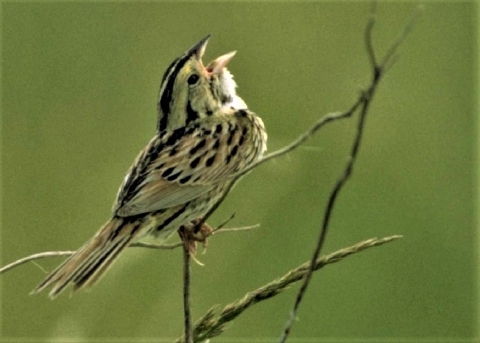Visit Us
For a first visit to Big Oaks National Wildlife Refuge, please allow at least an hour to stop at the office, take the safety briefing and obtain a daily pass. That’s also a great time to talk with the staff about activities available on the refuge, pick up a refuge map, and find out about current wildlife sightings.
Location and Contact Information
Tours
The refuge offers guided tours by van throughout the public use season. Special guided tours can be requested for birding, wildflower hikes, and historical tours of the property. Visitors can also schedule tours of the historic Old Timbers Lodge. For more information call the refuge Office. Tours of the refuge could be restricted due to pandemic restrictions.
What We Do
Wildlife and habitat management, especially for rare and endangered species, are the priorities for Big Oaks staff. Various kinds of surveys and monitoring take place annually on the refuge, usually in cooperation with local universities. Past projects have included monitoring endangered Indiana bats, American burying beetles, and American kestrels. Volunteers and interns have assisted with many surveys of forest and grassland bird nest productivity, cerulean warbler nesting ecology, and small mammal biodiversity. The most recent and on-going project on the refuge is providing habitat for monitoring the state-endangered crawfish frog.
Our Organization
Our Species
Big Oaks National Wildlife Refuge is a Globally Important Bird Area and hosts one of the world’s largest populations of Henslow’s sparrows. The refuge also provides nesting habitat for cerulean warblers, temporary wetlands and grasslands for state endangered crawfish frogs and habitat for many other rare species of animals and plants.
Projects and Research
Big Oaks has been monitoring and managing for the state endangered crawfish frog for many years. Other research projects have included the monitoring of Indiana bats, saw-whet owls,American burying beetles, and American kestrels.
Northern saw-whet owls migrate through Indiana every fall and banding has taken place at Big Oaks for many years to learn more about the owl's distribution and abundance. Banding takes place on nights in early Novem ber where the birds are caught in mist nets (similar to a fine mesh tennis net).









